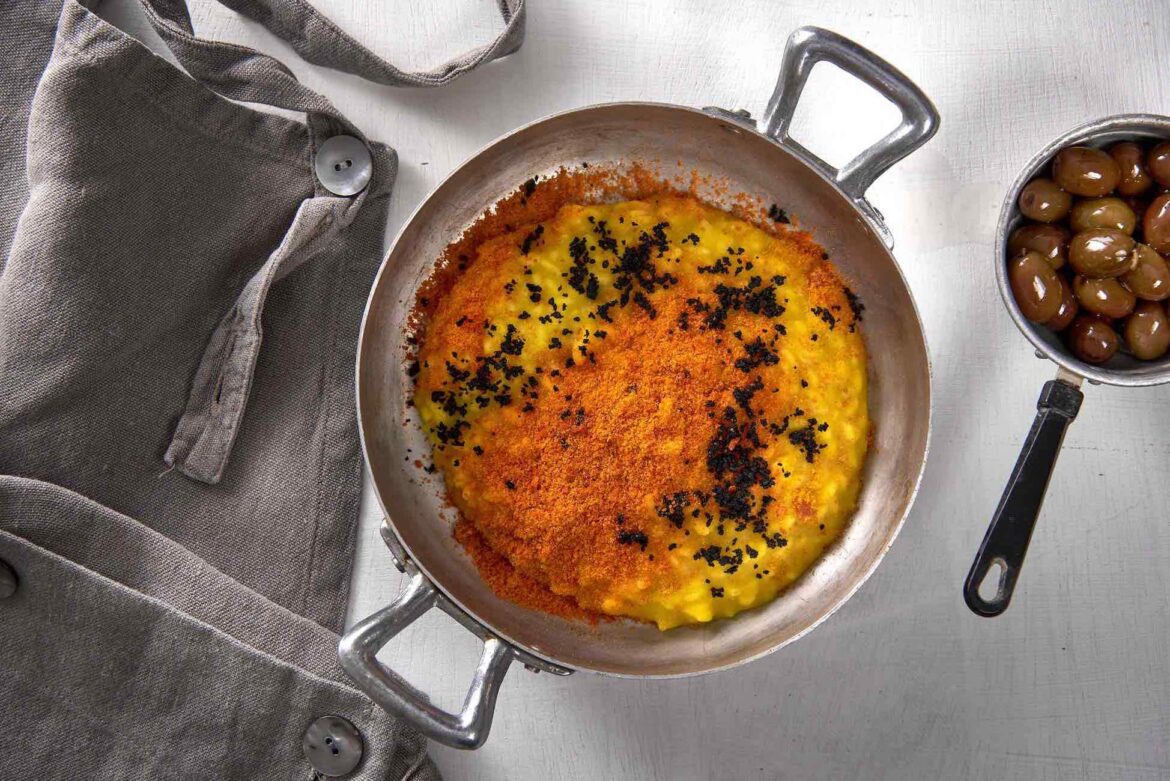So, as mentioned on the latest episode of The Milanophiles podcast, here’s the recipe for risotto with pumpkin and ‘nduja from Cucina Millanese Contemporanea (Contemporary Milanese Cooking in English) by Cesare Battisti, chef of Ratanà, (one of my favorite restaurants in Milan!) and food writer Gabriele Zanatta of Identità Golose.
To listen to the episode, you can click here. Otherwise, you can listen to The Milanophiles on all major streaming platforms like Spotify, Apple Podcasts, Amazon Music, iHeart Radio, etc.
So, without further ado, the recipe, excerpted from the Italian version of Cucina Milanese Contemporanea and translated by me.
Risotto with pumpkin and ‘nduja
Rice and pumpkin is a classic in Milanese cookbooks because pumpkin (squash) abounds in the Po Valley, from Milan to Mantua. Left to ripen in the sun, the summer squash has a classic sweetish flavor that we have tried to combine, in an unusual way, with the minerality of the olives and the spiciness of the ‘nduja. Our favorite squash varieties are the Mantuan squash and the Violin squash.
Ingredients
240 g Carnaroli rice
200 g pumpkin/squash
100 g Calabrian ‘nduja
80 g black olives in brine
20 g butter
90 g grated cheese
1 liter vegetable broth (1 onion, 1 carrot, 1 celery)
1 Tbsp. extra-virgin olive oil
Steps
1. Clean the pumpkin, removing the skin and seeds.
2. Prepare a vegetable broth with the carrot, celery, and onion.
3. Cut the squash and, without adding any seasoning, cook it in the oven for around 30 minutes.
4. Blend the squash and set it aside.
5. Bend the ‘nduja separately and spread the mixture on a baking sheet.
6. Let the mixture dehydrate and then blend it until it’s almost powdered.
7. Dehydrate the olives and then break them up roughly with your hands.
8. Toast the rice with extra-virgin olive oil, adding the broth a little at a time.
9. After 7 minutes, add the pumpkin purée.
10. Let cook for around 14 minutes, and then, when cooked, cream or whip the rice with butter and cheese. (This last step is what Italians refer to as mantecare – a rather difficult ritual to translate.)
11. Plate, then add the oven-dried and blended ‘nduja powder and the split black olives.
Cover photo credit: Silvia Luppi





